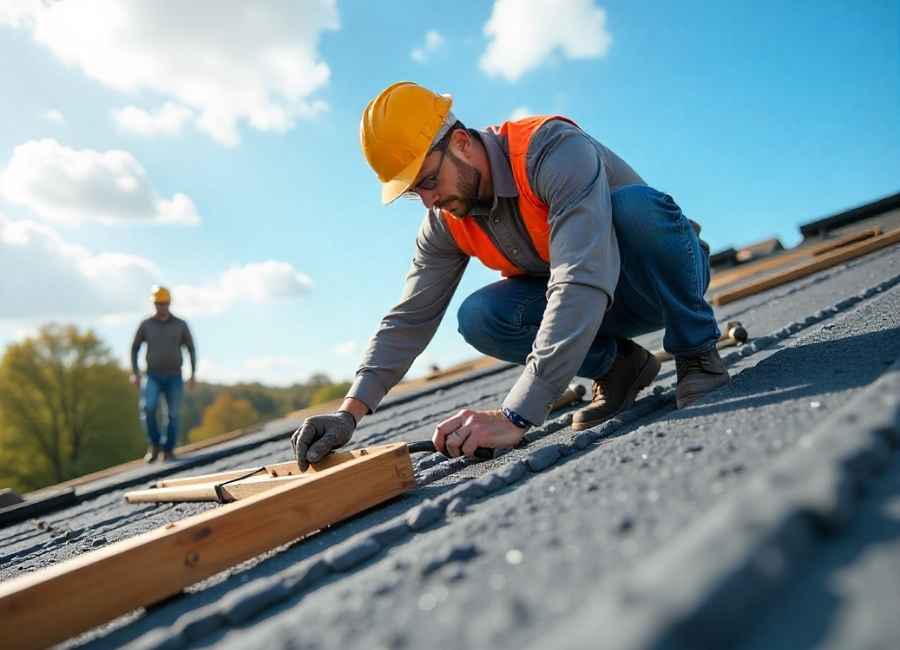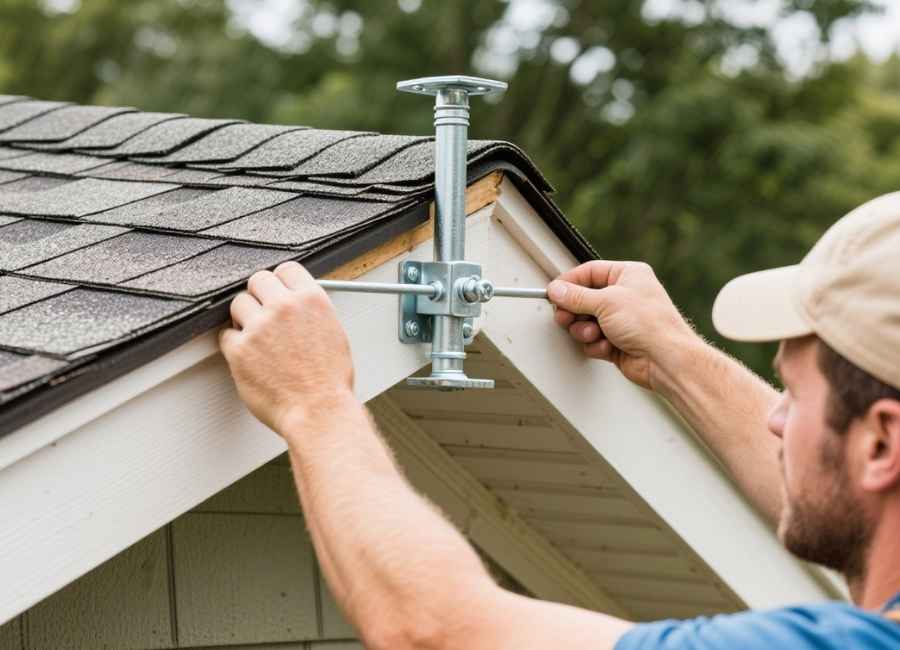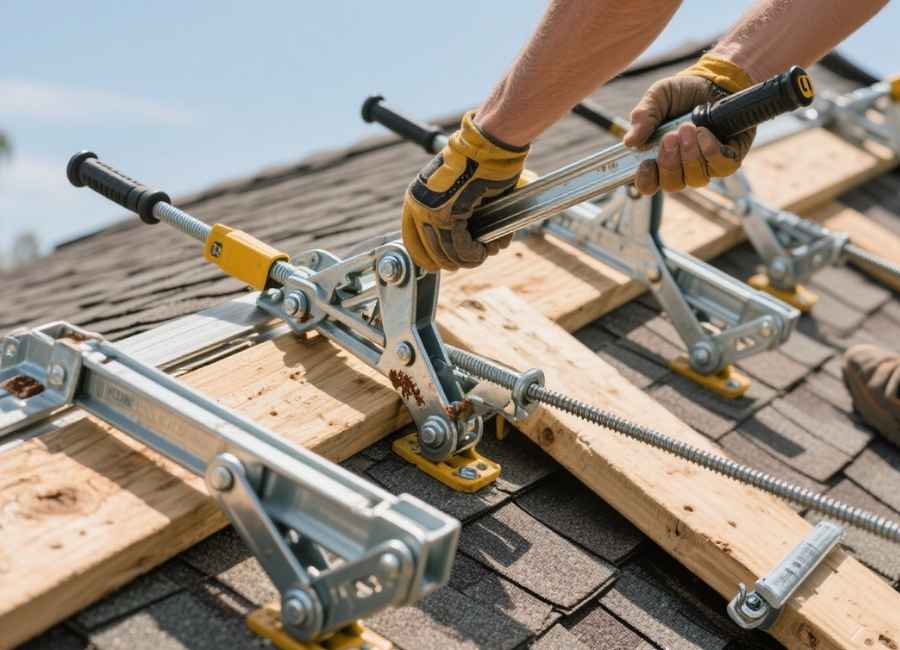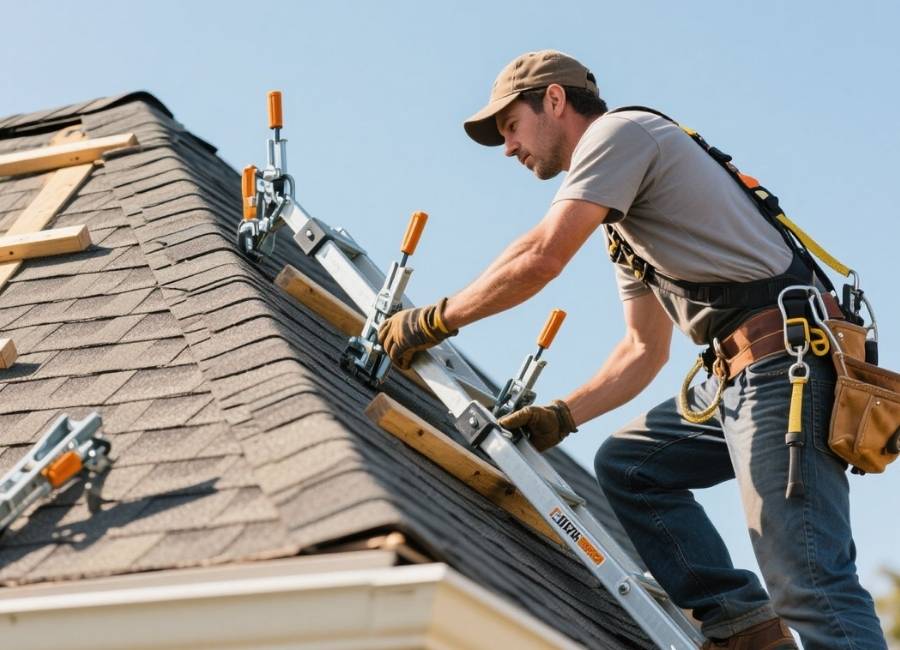Roof jacks are an essential tool in roofing projects, whether you’re a seasoned contractor, a passionate DIY homeowner, or a construction professional. They provide safety, stability, and convenience when working on sloped roofs. But what exactly are roof jacks, and how do you use them effectively?
This blog will answer those questions and more. By the end, you’ll understand how roof jacks work, how to install them, and the best practices to ensure they function properly. You’ll also gain tips on choosing the right roof jack for your project and how to stay safe while using one.
What Is a Roof Jack?

A roof jack is a temporary or permanent device that is installed on a sloped roof to provide a secure platform or anchor point. It serves multiple functions, such as holding roof materials in place during installation, supporting workers on pitched surfaces, and improving overall safety.
Roof jacks are commonly used in both residential and commercial building projects, providing a sturdy base when scaling steep roofs that would otherwise be hazardous to work on.
Some key features of roof jacks include:
- Adjustable Angles: Roof jacks are designed to accommodate various roof pitches, offering flexibility for any steep angle.
- Durability: Most roof jacks are made from heavy-duty steel or metal to support substantial weight and endure harsh weather conditions.
- Easy Installation and Removal: These tools are user-friendly, making the setup process quick and non-disruptive to construction timelines.
Roof jacks are often paired with a walk board or plank to create a stable surface for standing or laying down tools and materials.
Why Are Roof Jacks Essential?

Roof jacks serve three critical purposes in construction and roofing:
1. Improved Safety
Falling from a sloped roof poses a significant risk. Roof jacks, combined with walk boards, reduce the chance of slips and falls by providing a flat, steady platform for workers to step on. Many construction safety guidelines recommend their usage to keep roofers protected from workplace injuries.
2. Enhanced Work Efficiency
Roof jacks streamline roofing tasks by giving workers a comfortable surface to move around on. Whether you’re laying shingles, installing solar panels, or repairing leaks, having a secure base speeds up the process and reduces strain on your body.
3. Protecting Roof Materials
Roof jacks also help reduce damage to expensive roofing materials by distributing weight evenly across the roof’s surface. Without them, unnecessary pressure in certain areas may cause materials to crack or shift.
How to Install a Roof Jack

Installing a roof jack may seem intimidating at first, but with the right guidance, it’s a straightforward process. Follow these steps for a safe and effective installation:
Step 1: Gather Your Materials
Before you begin, ensure you have the following items:
- Roof jacks
- Lumber (2×10 or another walk board size that fits securely)
- Roofing nails
- Hammer or power drill
- Measuring tape
- Safety gear (harness, hard hat, gloves)
Step 2: Measure and Mark
Start by measuring the roof’s pitch to determine the appropriate installation angle for your roof jacks. Position the jacks so they will provide a level walking path when installed. Use a pencil or chalk to mark the locations for each jack, typically at intervals of 4–6 feet.
Step 3: Install the Roof Jacks
- Place the roof jack at the marked spot, making sure the flat part is flush against the roof’s surface.
- Drive nails or screws through the pre-drilled holes to secure the jack in place. Be sure to use enough fasteners to prevent shifting under pressure.
- Repeat this process for any additional roof jacks.
Step 4: Add the Walk Board
Once all roof jacks are securely installed, place a sturdy wooden plank or walk board on top of them. Ensure the board is firmly seated in the roof jacks’ notches and that it spans evenly across them.
Step 5: Test for Stability
Before stepping onto the platform, gently shake the walk board to confirm it’s stable. If there’s any wobbling or movement, double-check the jack installations and tighten the fasteners.
Safety Tip:
Always use a harness or fall protection system in conjunction with roof jacks, especially on roofs with steep pitches.
Best Practices for Using Roof Jacks

Roof jacks are highly effective when used correctly. To ensure safety and durability, follow these best practices:
- Inspect Before Use: Check your roof jacks for signs of damage, rust, or wear before starting any project. Faulty equipment can be unsafe and should be replaced.
- Choose the Right Tools: Select roof jacks that are compatible with your roof type and pitch. Some roof jacks are designed specifically for steep roofs, while others work best on gentler slopes.
- Secure Fasteners Properly: Loose nails or screws can compromise the stability of your roof jacks. Use high-quality fasteners and double-check their installation.
- Distribute Weight Evenly: When using multiple roof jacks and walk boards, ensure they are evenly spaced to prevent overloading one area of the roof.
Choosing the Right Roof Jack for Your Project
When selecting roof jacks, there are a few factors to keep in mind:
- Material
Opt for roof jacks made of durable materials like steel or heavy-duty aluminum. They are better suited to withstand weather exposure over long periods.
- Weight Capacity
Consider the weight capacity of the roof jack based on how many workers or materials will be supported. Always select jacks rated slightly higher than your needs for an added margin of safety.
- Roof Pitch Compatibility
Different roof jacks cater to various angles, so verify pitch specifications before making a purchase.
- Ease of Use
Choose roof jacks that are straightforward to install and compatible with standard tools like hammers and drills.
- Brand Considerations
Trusted brands with positive reviews often offer superior quality and warranties. Investing in reputable products can save time and money in the long run.
FAQs About Roof Jacks
How Much Weight Can Roof Jacks Support?
Most roof jacks are designed to hold between 250 and 500 pounds, depending on the material and design. Always check the manufacturer’s specifications for accurate capacity limits.
Can I Leave Roof Jacks Installed Permanently?
While some roof jacks are designed for permanent installation, temporary jacks are meant to be removed once a project is completed. Leaving temporary jacks in place may result in roof damage or additional wear and tear.
Where Can I Buy Roof Jacks?
Roof jacks can be purchased at most hardware stores, roofing supply shops, or online retailers like Home Depot, Lowe’s, or Amazon.
Elevate Your Roofing Projects Today
Roof jacks are an invaluable tool for roofing professionals, DIY enthusiasts, and contractors alike. They provide safety, enhance efficiency, and protect your roof, ensuring successful project completion with minimal risk. Whether you’re repairing a property or starting a brand-new construction, the right roof jacks can make all the difference.
Looking for more expert advice on improving your roofing setup? Bookmark this blog for easy access or share it with fellow construction professionals. By investing in high-quality roof jacks and following proper installation guidelines, you’re setting yourself up for success every time you step onto a sloped roof.











